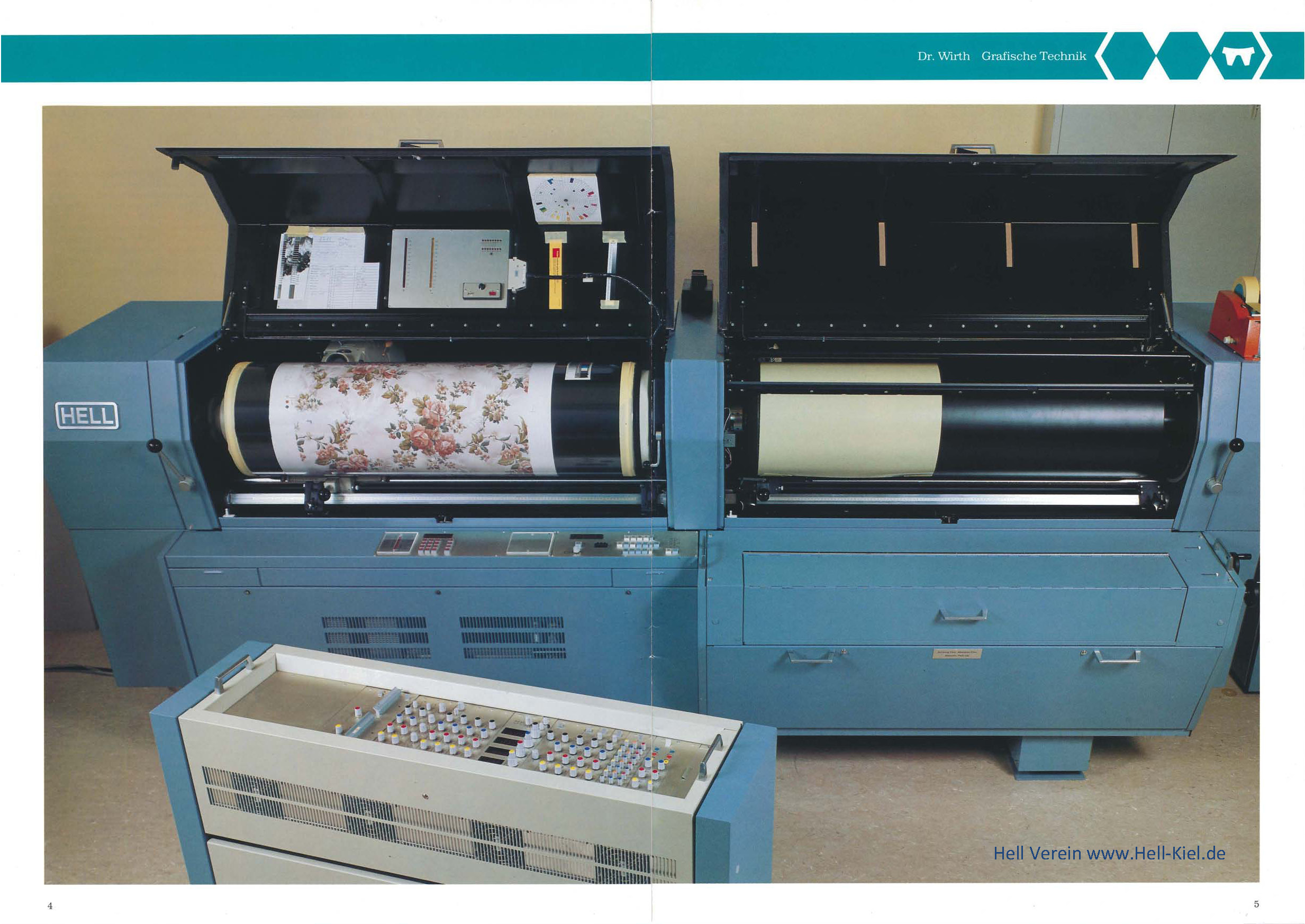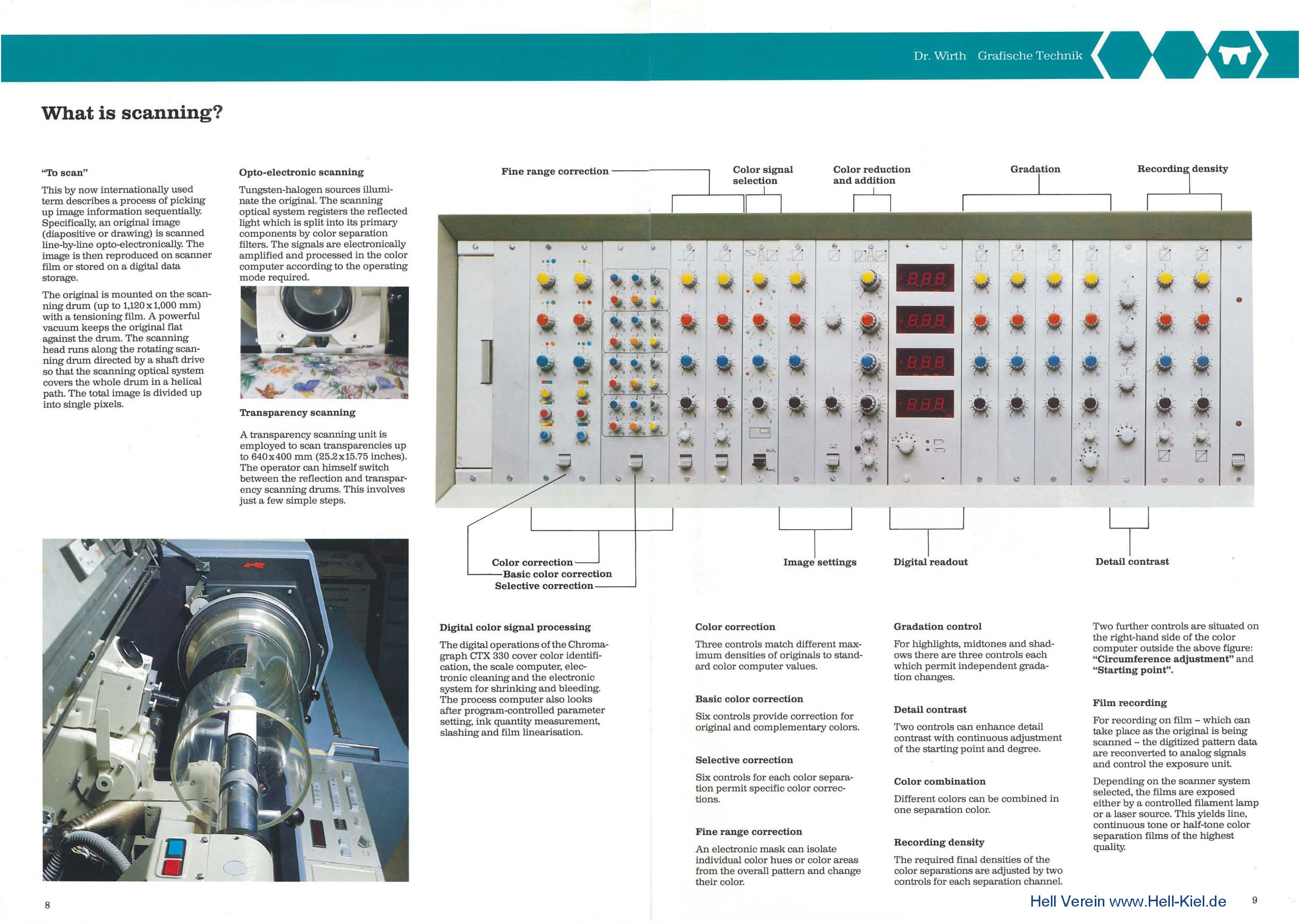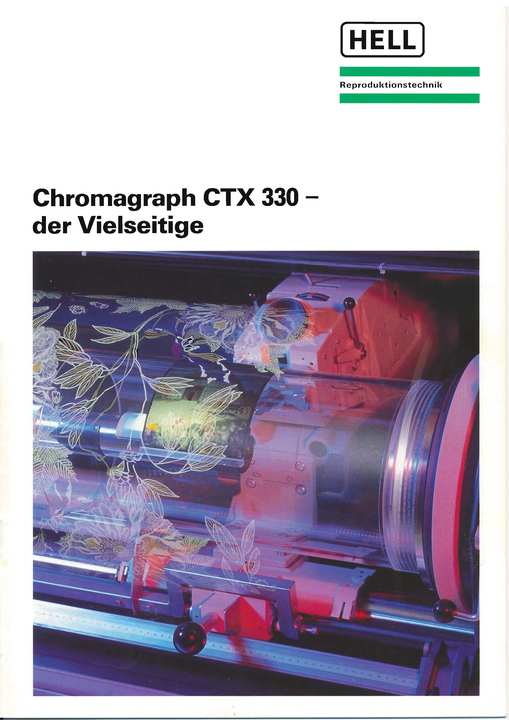Scanner: Special application
| CTX 330 Introduction | ||||
|
The typical application of the Hell drum scanner was and still is the production of 4 color separations for the printing of magazines, advertising leaflets, newspapers etc. Here the colors of the original are divided into the three color components yellow, magenta and cyan with the respective density values. The existing black content is calculated.
The scanner presented here is specially designed for scanning documents with up to 16 colors.
|
||||
|
A template created by the artist, for example for textile printing, usually contains up to 16 different colors which, unlike 4-color printing, are NOT printed on top of each other for color mixing. This application involves up to 16 special color mixtures (shades) that the scanner must recognize. Only "yes" or "no" information is recognized and exposed on the film. Both, the original and the output format are relatively large, which explains the particularly large scanning and recording drum size of 100 x 112 cm. Explanation of the special CTX 300 functions based on some difficult but
typical reproduction tasks.
Further areas of application are: Facsimile, porcelain and decorative printing (wallpapers, decorative foils) and mapmaking.
|
||||
|
|
||||
| Cataloge for CTX 330 | ||||
  |
||||
|
|
||||
|
Der Chromagraph CTX 330 (1976)
Introduction to functionalities and technical structure
3 pages; 1070 Kbyte ; (German)
|
 |
|||
|
Farbauszugssystem 330 (1977)
4 pages; 2 MByte ; (German)
|
 |
|||
|
14 pages ; 2 MByte ; (German)
|
 |
|||
|
An application example
4 pages ; 1,9 Mbyte ; (German)
|
 |
|||
|
Chromagraph CTX 330 (1981)
The multi-purpose scanner (wallpaper, wood decor, etc.)
2 pages ; 600Kbyte ; (German) |
 |
|||
|
16 pages; 2,2 MByte ; (German)
|
 |
|||
|
4 pages; 560 KByte
|
 |
|||

